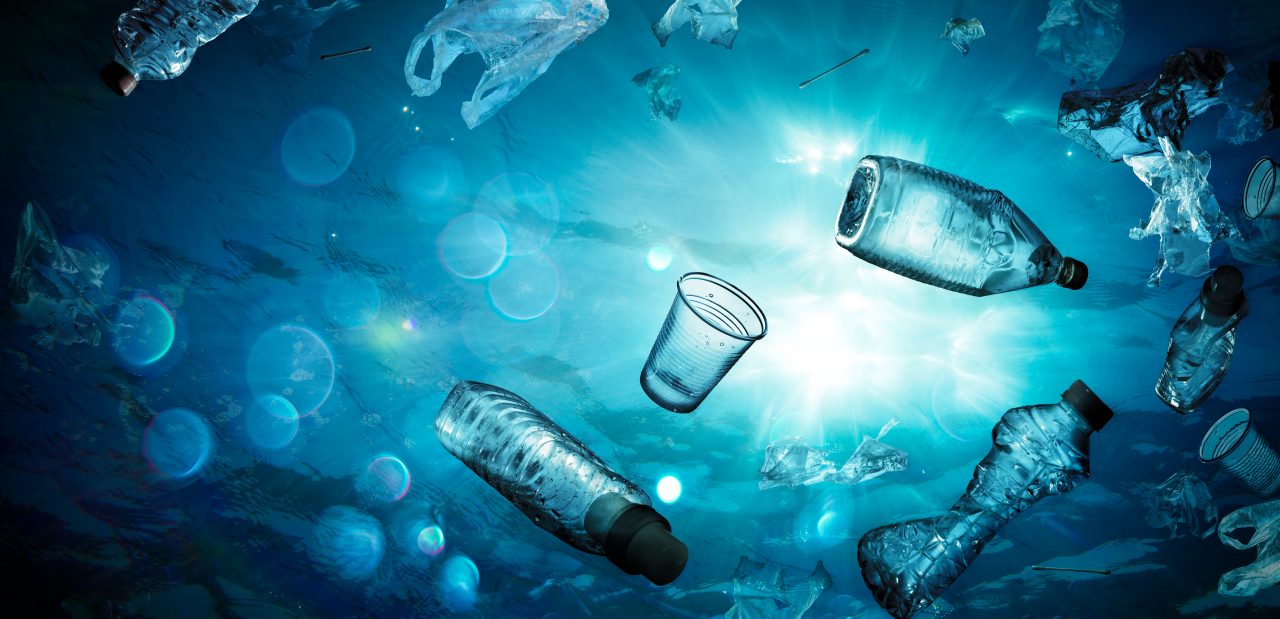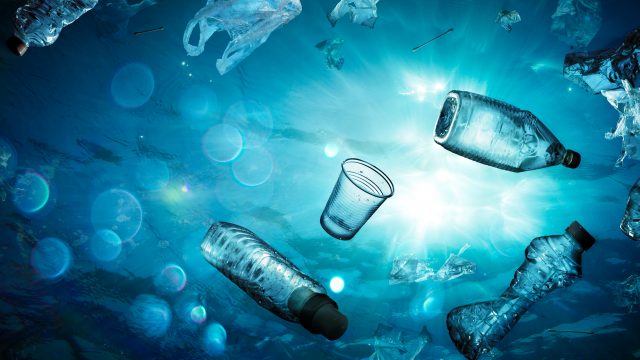
Single-use plastic products
Single-use plastic products are made wholly or partly from plastic and are intended to be used once. In other words, they are not designed or manufactured for take-back and reuse with the producer for the same purpose for which they were originally conceived.

Single-use plastic products
Definition of plastic
Plastic is defined as a material consisting of a polymer to which additives or other substances may have been added, and which can function as a main structural component of final products, with the exception of natural polymers that have not been chemically modified (Statutory Order on extended producer responsibility for certain plastic products, section 3(16)).
Read more about legislation for single-use plastic productsSingle-use plastic products
Containers such as boxes, with or without a cover, used for food
a) which is intended for immediate consumption, either on-the-spot or take-away,
b) which is typically consumed from the receptacle,
c) and is ready to be consumed without any further preparation, such as cooking, boiling or heating, including food containers used for fast food or other meal ready for immediate consumption, except beverage containers, plates and packets and wrappers containing food.
Packets and wrappers made from flexible material containing food that is intended for immediate consumption from the packet or wrapper without any further preparation.
Beverage containers with a capacity of up to three litres, i.e. receptacles used to contain liquid such as beverage bottles including their caps and lids and composite beverage packaging including their caps and lids.
However, not glass or metal beverage containers that have caps and lids made from plastic.
Beverage containers subject to statutory order on a deposit on and collection etc. of packaging for certain beverages are exempted.
Cups for beverages, including their covers and lids.
Plastic carrier bags with a wall thickness below 50 microns (0.05 mm).
Pre-wetted personal care and domestic wipes.
A balloon is typically a non-porous bag of light material that is intended to be inflated with air or gas.
Balloons for industrial or other professional uses and applications that are not distributed to consumers are not subject to producer responsibility.
Tobacco products with filters that are single-use plastic products, and filters that are single-use plastic products and that are marketed for use in combination with tobacco products.
You can read more about tobacco product filters here.
Scoping of single-use plastic products
Assessing whether a product is in scope or exempt from producer responsibility is a key task for the national registers, and thereby also for DPA. We provide guidance and make decisions regarding what in the EU is known as scoping – or in or out of scope.
Made wholly or partly from plastic
For products under the Single-Use Plastics Directive and the Packaging Directive especially the wordings “made wholly or partly from plastic” and the distinction between “single-use and multi-use” give scope for interpretation when your business is to assess whether your product is affected by legislation on single-use plastic products.
The EU Commission has prepared thorough guidelines; the most important findings are summarised below.
General exemptions from the directive’s scope are:
- Glass or metal beverage containers that have caps and lids made from plastic.
- Beverage containers and beverage bottles used for food for special medical purposes as defined in Regulation (EU) No 609/2013 of the European Parliament and of the Council on food intended for infants and young children.
Further interpretation of the directive
The directive applies to:
- The ten above-mentioned single-use products
- AND to all products manufactured from oxo-degradable plastic (single as well as multi-use products)
- AND to fishing gear made of plastic.
Plastics consist of a number of structures in chains called polymers. The five polymers making up by far the largest share of single-use plastic products are:
- PP (polypropylene)
- HDPE (high-density polyethylene)
- LDPE (low-density polyethylene)
- LLDPE (linear low-density polyethylene)
- PET (polyethylene terephthalate)
To this should be added:
- EPS (expanded polystyrene, also called foam plastic or thermoplastic)
In the directive guidelines, the definition of plastics covered reads among others:
“Plastics manufactured with modified natural polymers, or plastics manufactured from bio-based, fossil or synthetic starting substances are not naturally occurring and should therefore be addressed by this Directive. The adapted definition of plastics should therefore cover polymer-based rubber items and bio-based and biodegradable plastics regardless of whether they are derived from biomass or are intended to biodegrade over time.”
More information can be found in the source: Commission guidelines on single-use plastic products in accordance with Directive (EU) 2019/904 of the European Parliament and of the Council on the reduction of the impact of certain plastic products on the environment
According to the directive, a single-use plastic product means a product that is designed or placed on the market to accomplish, within its life span, only one or a few trips before becoming waste. The product is made wholly or partly from plastic, and refilling or reuse is not intended.
Composite product
Products made from different composite material types are also called composite products. For example, a plastic coating or lining can be applied to the surface of a board-based item to provide protection against water or fat. Cardboard plates and beverage cartons are examples of such composite products partly made from plastic. This type of product is covered by the directive.
There is no de minimis threshold
The directive does not have a minimum threshold for the plastic content in the product to determine whether or not that product is covered by the directive. Thereby, it is not decisive whether the product is made wholly from plastic or whether the main component is another material.
Check product design characteristics
As there is no minimum threshold, the general product design characteristics can be used to assess whether the product is a multi-use or a recyclable product that may thereby be exempt from the provisions of the directive.
A multi-use product must have the following product design characteristics:
- Can be washed and used again for the same purpose
- Can be washed or used several times without breaking
- Is conceived as a recyclable product
Thereby, product design characteristics such as material composition, washability and reparability and the product’s ability to make multiple trips for the same purpose can contribute to deciding whether or not the product is in scope.
Chemically modified or non-chemically modified
The guidelines mention a number of plastics to illustrate which plastics are covered by the directive, and which are not. Chemically modified plastics are covered by the Single-Use Plastics Directive.
Cellulose (regenerated), e.g. in form of viscose, lyocell and cellulosic film:
is not considered to be chemically modified, as the resulting polymers are not chemically modified compared to the ingoing polymer.
Cellulose acetate (i.a. tobacco product filters):
is considered to be chemically modified given that, compared to the ingoing natural polymer, the chemical modifications of cellulose during the production process remain present at the end of the production process. Consequently, this type of plastic is covered.
Styrofoam (expanded polystyrene, EPS):
Foam plastic (also known under the registered trademark Flamingo™) is undesirable in the oceans; therefore, EPS plastic is covered by the directive. There is a market ban on beverage cups and food containers made from EPS plastic.
Single-use plastic products that are also packaging
Single-use plastic products covered by the Single-Use Plastics Directive and that are also considered packaging (as defined by point (1) of Article 3 of the Packaging and Packaging Waste Directive) must comply with the requirements of both directives. In the event of a conflict between the two directives, the Single-Use Plastics Directive shall prevail.
In DPA we are happy to help and guide you; we also make decisions when you are in doubt about whether or not to make a registration.
Shortcuts
About registration
See how to register as a producer or an importer in the producer register
Read about tobacco filters
Read about cigarette filters and tobacco product filters subject to producer responsibility for single-use plastic products
Read about fishing gear
Read about the producer and cleanup responsibilities for fishing gear
Economy and fees
See current fees for products subject to producer responsibility
Single-use plastic - legislation
See the statutory basis for producer responsibility for tobacco product filters (single-use plastic products)
Single-use plastic - product scoping
See which types of single-use plastic products are in scope and check out the exemptions (scoping).
Single-use plastic - marking
Read more about marking requirements for single-use plastic products
Et skodfrit Danmark (Denmark without cigarette butts)
See campaign from the Ministry of Environment against cigarette filters littering (in Danish)
Packaging
See also producer responsibility for packaging
European registers
Find producer registers in other EU countries